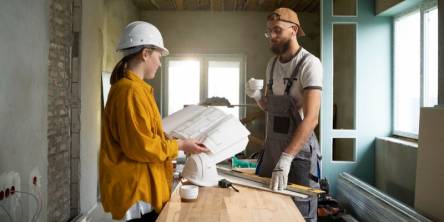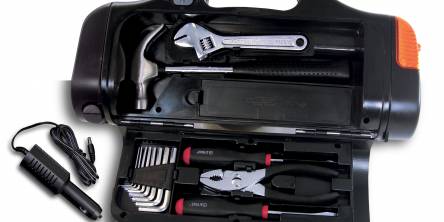How to Identify Recyclable Items in Your Home

Finding out which items in your home can be recycled might seem hard. Every year, Aussies toss away heaps of waste that could be recycled. This post will show you how to spot recyclable items, making your home more eco-friendly. Let's get started!
Understanding Recyclable Items in Your Home
Recyclable items are everywhere in your home. They include paper, plastic, glass, and metal.
Types of recyclable materials (paper, plastic, glass, metal)
- Paper includes newspapers, magazines, and cardboard boxes. It is easy to recycle and helps save trees.
- Plastic makes up containers, bottles, and bags. It's essential to check the type of plastic before recycling.
- Glass materials such as bottles and jars are recyclable. They can be reused many times without losing quality.
- Metal comes from cans and some types of packaging. It can be recycled repeatedly and requires less energy than making new metal.
Sorting these materials is key for an eco-friendly home. Understanding what you can recycle helps manage household waste better.
How to Identify Recyclable Items
To find recyclable items, start by looking for recycling symbols on the packaging. Check labels to see if materials can be reused or recycled easily.
Symbols for recyclable materials
Recycling symbols help you know what materials can be recycled. Each symbol has a number inside a triangle. This number shows the type of plastic used in the item. Common types include #1 (PETE) and #2 (HDPE).
Look for these symbols on packaging, such as on bottles and containers. They guide you to make eco-friendly choices at home. Understanding these symbols is key to sorting waste properly and promoting sustainability in your daily life.
Check for other recycling symbols
Look for these other recycling symbols on your items. These symbols help you know if something can be recycled.
- Some paper products might have a recycling mark. This means they can go into the recycling bin.
- Glass bottles and jars often show a recycling symbol too. They are usually recyclable but check local rules.
- Metals like aluminum cans often carry a recycling symbol. They are easy to recycle and can be reused many times.
- Not all items with symbols are recyclable everywhere. Always check your local waste management guidelines for details.
Identifying recyclable materials helps promote green living in your home.
Pay attention to packaging materials
Packaging materials play a big role in recycling. Different types have various rules for recycling.
- Check if the packaging is made from paper, plastic, glass, or metal. Each of these can often be recycled.
- Separate plastic types carefully. Some plastics are recyclable, while others are not.
- Avoid soft plastics like bags and wrappers. These items usually cannot go in your recycling bin.
- Rinse containers before recycling them. Leftover food or liquids can spoil the recycling process.
- Identify multi-layered packaging. Items like Tetra Paks may not be recyclable due to their materials.
- Think about reusable options. Use containers that you can wash and use again instead of buying new ones every time.
- Consider compostable packaging as an alternative. This type of material breaks down naturally and reduces waste.
Being mindful of packaging helps create a more sustainable home. It allows you to recycle effectively and reduce waste overall.
Know which items are not recyclable
Sorting recyclable items can be tricky. Certain items cannot be recycled at all.
- Items made from pizza boxes are not recyclable. The grease and food waste makes them unsuitable for recycling.
- Plastic bags often get tangled in machines. They should be reused or returned to specific drop-off locations.
- Styrofoam cannot be recycled kerbside. It is fluffy and takes up space in landfills.
- Ceramics and glass dishes do not belong in recycling bins. These materials melt differently than recyclable glass.
- Tissues and paper towels are too contaminated with waste. They must go into the rubbish instead of the recycling bin.
- Some plastics, like those marked with numbers 3, 6, and 7, often can't be recycled. Check local guidelines for more information on these types.
- Contaminated containers can ruin the recycling process. Make sure to clean food or drink residue from all items before disposal.
Educating others about what is recyclable helps create a more sustainable home environment.
Tips for Sorting and Preparing Recyclable Items
Rinse your containers before recycling them. Remove parts that cannot be recycled, and put materials in the proper bins.
Rinse and clean containers
Clean containers help the recycling process. Unwanted food waste can spoil other recyclable items.
- Rinse out jars and bottles before tossing them in the bin. This simple step keeps your recycling clean and safe.
- Use warm water for better results. Warm water helps remove sticky labels and leftover food.
- Remove lids from bottles. Lids are often made from different materials that cannot be recycled with the bottle.
- Clear any food residue from containers. Leftover food can attract pests and spoil other materials in the recycling bin.
- Rinse cans thoroughly. Empty cans should have no traces of their former contents, like soup or vegetables.
- Dry-cleaned items before putting them in bins. This prevents moisture build-up, which can ruin other recyclables.
Keep your home environmentally friendly by cleaning up before you recycle!
Remove non-recyclable parts
Rinsing and cleaning containers is just one step in recycling. After that, you must remove any parts that cannot be recycled.
- Check items for non-recyclable parts like lids or labels. Plastic lids often cannot be recycled with the containers. You should throw them away.
- Take off plastic straws from drink containers. They are rarely recyclable and should go in the trash.
- Remove any non-recyclable food packaging from your recyclable materials. Items like plastic wraps or foil can’t go into the recycling bin.
- Separate electronics and batteries from recyclable waste. These items need special handling and should not go into regular bins.
- Clear out excess materials like packing peanuts or foam inserts. These are not recyclable and will contaminate your recycling stream.
- Take apart multi-material items, such as snack wrappers. They often contain layers of materials that can’t be recycled together.
Sorting these parts helps ensure more of your waste gets recycled properly, leading to a better environment at home and beyond.
Separate materials into designated bins
Sorting recyclables helps keep your home clean and makes recycling easier. It's important to know where to put each item.
- Choose different bins for each type of material. Use one bin for paper, another for plastic, a third for glass, and a fourth for metal.
- Label each bin clearly. This way, everyone in the home knows where to place their recyclables.
- Avoid mixing materials. Mixing can spoil the recycling process. It may lead to more waste.
- Ensure that bins are easily accessible. Place them in common areas like the kitchen or garage.
- Check the bins regularly for overflow. Empty them when they get full to keep your space tidy.
- Use clear bags or containers when possible. This helps others see what is recyclable at a glance.
Identifying recyclable items will help you recycle better in your home. And when it all gets to be a bit too difficult, a good rubbish removal service can sort through the recyclable items for you and help you in your efforts to become more sustainable.
Promoting a More Sustainable Home
Promoting a More Sustainable Home can be as simple as teaching others about recycling to create a better future, or sharing ways to cut down on waste. Even just choosing items that last longer can make your homes more sustainable. You can make a big difference from just being at home.
Educate others on recycling
Teaching others about recycling is key to helping the planet. Share simple facts and tips with friends and family. Use clear examples of recyclable items, like plastic bottles or cardboard boxes.
Explain the recycling symbols found on the packaging to others. This can help them identify what can be recycled at home.
Start a conversation about reducing waste as well. Talk about composting as a way to recycle food scraps. Encourage people to choose reusable items instead of single-use products. The more we share knowledge, the better our communities will recycle and care for our environment.
Reduce and reuse items to limit waste
Reducing and reusing items can cut down on waste. Simple actions make a big difference. For example, use cloth bags instead of plastic ones. Store food in reusable containers rather than single-use wraps.
Repair broken items instead of throwing them away. This helps save resources and money too. Look for ways to fix or repurpose old things around your home. Each choice leads to less rubbish and helps the planet thrive.
Consider alternatives to single-use items
Single-use items harm the environment. They create a lot of waste. Instead, use reusable options. Choose cloth bags instead of plastic ones for shopping. Use glass or metal containers to store food instead of single-use plastic wraps.
Invest in a stainless steel water bottle. This choice helps reduce waste from disposable bottles. Try beeswax wraps for food storage too. These can replace cling film and are better for the planet.
Small changes like these make a big difference in how to identify recyclable items in your home.
Conclusion
Recycling is simple when you know what to look for. Check labels and symbols on your items. Clean containers and sort them right. You can help reduce waste at home. Share your knowledge with others. Together, we can make a difference!
Similar Articles
Building a home is not just about having a place to live. It represents your taste, personality, and lifestyle. Integrating the right improvements features can help enhance both the functionality and appearance of your living space.
When it comes to upgrading your bathroom, functionality and design go hand in hand. Among the many options available, brushed nickel shower heads, especially the high-pressure rainfall variety, have gained immense popularity.
Designing and building homes for people over the age of 55 isn’t just about adding grab bars and lowering countertops. It’s about creating spaces that feel modern, safe, and accommodating—without feeling clinical.
Pests are far more than a nuisance; they represent genuine threats to a home's structure and personal well-being. Insects and rodents not only trigger allergies and spread bacteria, but can also create hidden problems that may go undetected for months.
Emergencies fall into the category of the unexpected. No one wants to experience a crisis, but emergencies are one of life’s unknown factors you can prepare for.
Your fence is one of the first things people notice when they look at your home. It frames your yard, defines your property line, and can either add to or detract from your home’s curb appeal.
In today’s fast-paced world, families face evolving lifestyle challenges that traditional furniture solutions often fail to address.
Your front door is the face of your home. It's the first thing guests notice and the last impression they carry. Whether you're aiming for a cozy welcome, curb appeal for resale, or just want to feel good walking in every day, front door decor is a game-changer.
There’s something magical about a backyard pool. It’s more than a place to cool off during the summer—it’s where your kids learn to swim, where birthday parties become legendary, and where quiet Sunday mornings transform into family traditions.









